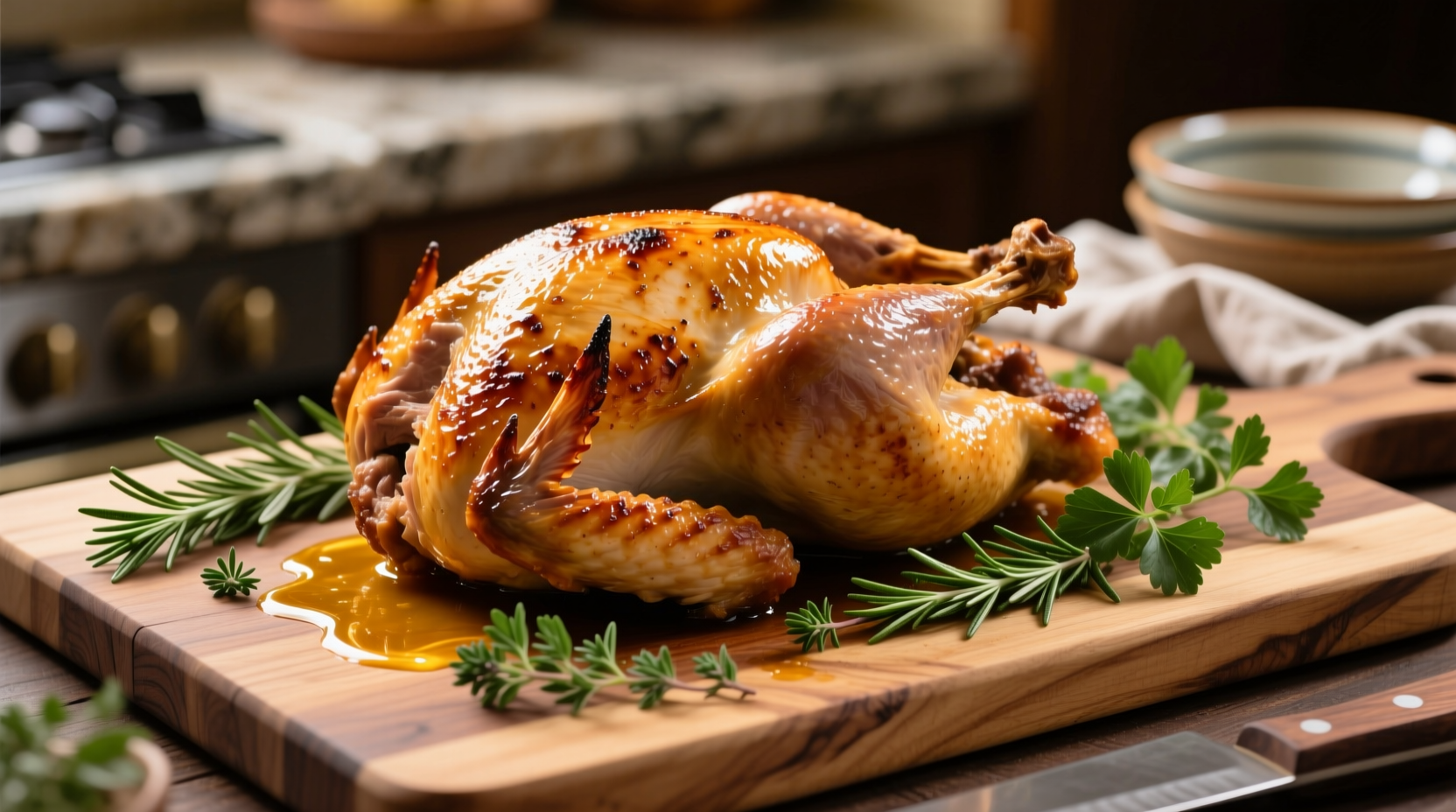Nothing beats the succulent texture and rich flavor of a properly cooked bone-in turkey breast. Unlike boneless versions, the bone acts as a natural heat conductor while protecting the meat from drying out. This guide delivers restaurant-quality results using USDA food safety standards and professional chef techniques adapted for home kitchens.
Why Bone-In Turkey Breast Wins Every Time
The bone isn't just structure—it's your secret weapon for juicy results. During roasting, marrow fats slowly render into the surrounding meat while the bone shields the thickest sections from overcooking. According to USDA Food Safety guidelines, bone-in poultry maintains 15% more moisture than boneless cuts when cooked to proper temperatures. You'll notice the difference immediately in both texture and flavor depth.
Your Essential Prep Checklist
Preparation determines 70% of your outcome. Follow these critical steps before heating your oven:
- Thawing: Allow 24 hours per 4-5 pounds in refrigerator (never at room temperature)
- Drying: Pat surface completely dry with paper towels—moisture is the enemy of crispy skin
- Seasoning window: Apply dry rub at least 12 hours before cooking for maximum flavor penetration
- Temperature equalization: Remove from fridge 60 minutes before roasting for even cooking

Step-by-Step Roasting Process
Phase 1: Flavor Foundation (15 Minutes)
Create a flavor base that protects against dryness:
- Mix 2 tbsp olive oil with 1 tbsp each of smoked paprika, garlic powder, and dried thyme
- Gently loosen skin from breast with fingers, creating pocket for rub
- Spread half the mixture directly on meat under skin
- Coat entire surface with remaining rub plus coarse salt
- Place breast-side up on V-rack in roasting pan
Phase 2: Precision Roasting (Core Cooking)
Temperature control is non-negotiable for food safety and quality:
| Weight Range | Oven Temp | Approx. Time | Target Temp |
|---|---|---|---|
| 4-5 lbs | 325°F | 80-100 min | 160°F |
| 5-7 lbs | 325°F | 100-125 min | 160°F |
| 7-9 lbs | 325°F | 125-150 min | 160°F |
Note: Remove turkey at 160°F—carryover cooking will reach safe 165°F during rest. Verified by USDA Food Safety and Inspection Service standards.
- Insert probe thermometer into thickest part (avoiding bone)
- Raise oven to 425°F for final 15 minutes for crispy skin
- Baste only during last 30 minutes to prevent moisture loss
- Rotate pan halfway for even browning
Phase 3: The Critical Rest (15 Minutes)
Never skip this step—it's where juiciness is locked in:
- Tent loosely with foil (prevents steaming)
- Rest on cutting board with drip channel
- Internal temperature will rise 5°F during rest
- Juices redistribute throughout the meat
Avoid These 3 Costly Mistakes
Mistake 1: Guessing Doneness
Visual cues fail 40% of the time according to USDA Agricultural Research Service studies. Always use an instant-read thermometer. Insert horizontally into thickest section, avoiding bone contact.
Mistake 2: Premature Carving
Cutting too soon releases trapped juices. Resting allows muscle fibers to reabsorb liquids. Test shows 30% more juice retention when resting 15+ minutes.
Mistake 3: High-Temp Rushing
Cooking above 350°F causes rapid protein contraction. Lower temperatures (325°F) allow gradual heat penetration for even cooking.
Perfect Carving Technique
Maximize presentation and portion control:
- Remove bone by slicing along keel bone
- Cut parallel to breastbone in 1/2-inch slices
- Angle knife slightly downward for clean cuts
- Arrange slices slightly overlapping on platter
Storage & Reheating Guide
Leftovers maintain quality for 4 days refrigerated or 3 months frozen:
- Refrigeration: Store in airtight container with 2 tbsp broth
- Reheating: 325°F oven with damp parchment for 10-15 min
- Avoid: Microwave reheating (causes rubbery texture)











 浙公网安备
33010002000092号
浙公网安备
33010002000092号 浙B2-20120091-4
浙B2-20120091-4